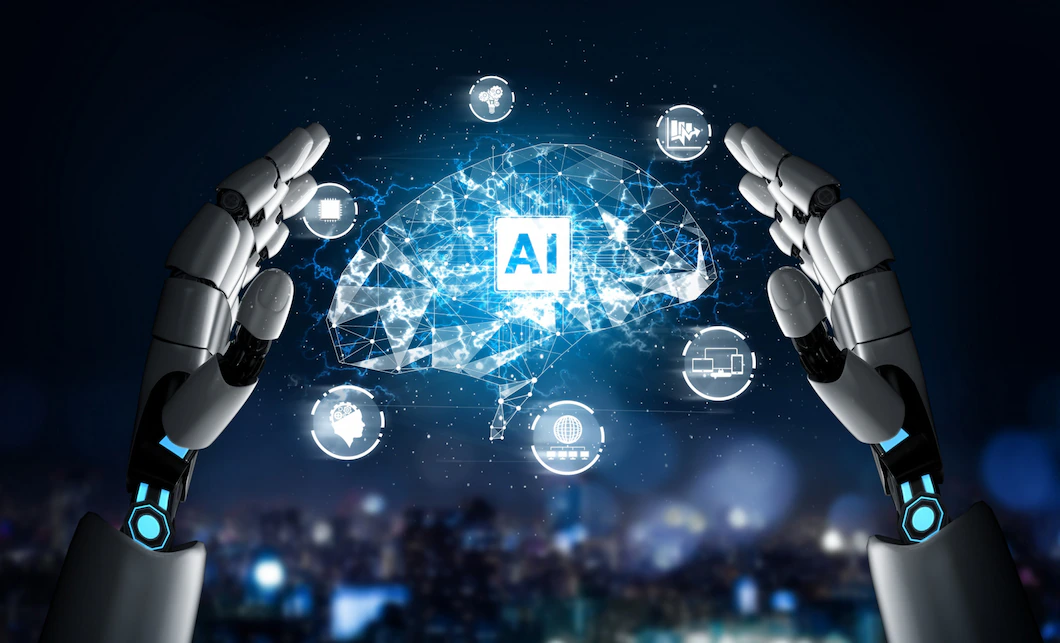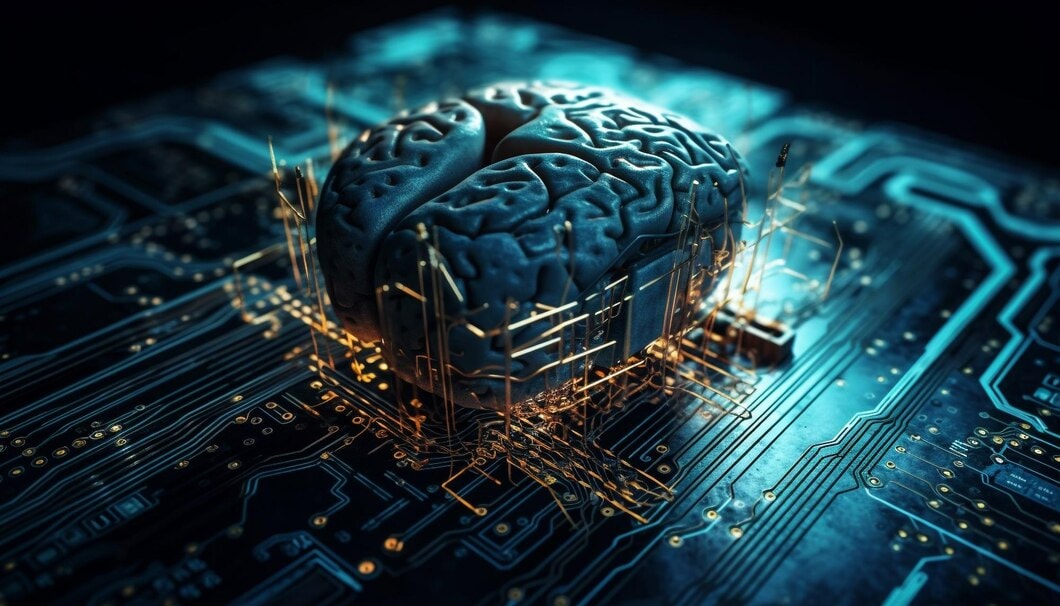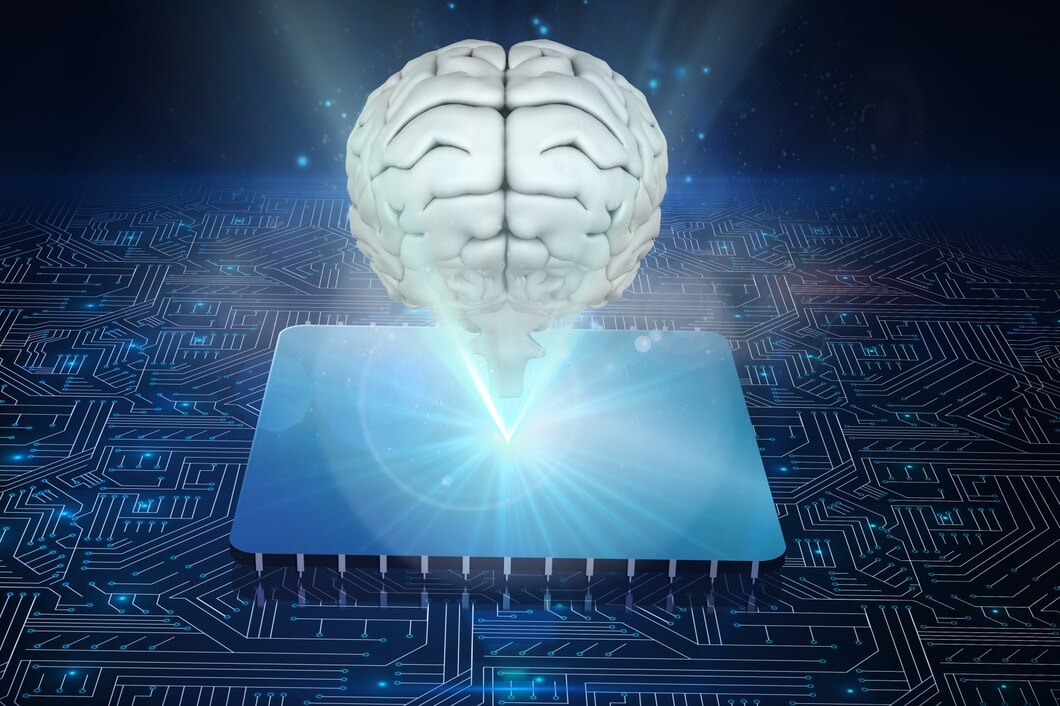Introduction
With machine learning (ML) and artificial intelligence (AI) suddenly sweeping through the floor of their application in the manufacturing field, these modern technologies are altering how products are designed, manufactured, and delivered.
They are either replacing or complementing traditional existing manufacturing technologies with newer and better data-and-knowledge-driven approaches: thereby developing increased productivity, enhancing the quality control systems, and optimizing supply chains.
In effect, the companies, especially in international manufacturing, find ML to be a major key differentiator with many innovative applications for increasing the operational effectiveness and profitability of such companies.

For longer than any other important sector of the global economy, the manufacturing sector has been under continuous pressure to cut costs, improve product quality, and ultimately meet customer demands ever so quickly.
The very focal area into which AI/ML has become invaluable has been the design of smarter manufacturing processes-a better layout for the layout and control of production scheduling, AI/ML algorithms enabled glancing into varied production data performance, establishing internal track records, hidden insights, and making predictions that enable other decision-supporting processes and automation of several critical tasks.
Here, we will highlight how ML is transforming the manufacturing domain-the important applications, benefits, challenges, and future potential of ML.

What Is Machine Learning In Manufacturing?
Machine learning is the subset of artificial intelligence that, after inputting data, enables a computer to learn and make decisions independently rather than from a specific programming.
In the manufacturing context, ML algorithms analyze bulky datasets, trying to discern patterns that can offer some prediction about future trends, thereby optimizing a manufacturing plant's operation to maximize efficiency.
In turn, traditional manufacturing processes were done more manually in many dimensions and required so much human interference.
On the contrary, it is machine learning that provides automation and intelligent decision-making capabilities to a manufacturing system.
ML models can automatically tune machine settings, predict maintenance of equipment, detect in-line quality issues, and optimize production processes based on continuous real-time data analysis.
The contrasting nature of the old-style production methods and the new-age ML-based ones lies in the capability to work with real-time data.
Conventional methods are too rigid and focus on preset rules, while an automated machine learning process would be as dynamic and responsive as possible in manufacturing and production by continuously compiling and analyzing data.
Top Applications of Machine Learning in Manufacturing processes

3.1. Predictive Maintenance
Perhaps, the most inspiring area of machine learning applications in manufacturing is predictive maintenance.
Here, ML models analyze sensor data coming from machines and equipment in order to predict possible failures well in advance, allowing manufacturers to conduct maintenance before failure actually occurs.
This cuts downtime of machines, enhances their life, and minimizes emergency repair costs.
Predictive analytics, for example, can predict the RUL of machinery via the pattern recognition of data linked with wear or impending malfunction.
In this way, only when there is enough evidence will maintenance be performed, which avoids unnecessary interventions, reducing maintenance costs.
Example: Machine learning models can analyze real-time process data received from sensors installed on production equipment within a manufacturing plant.
Upon the unusual vibration or sudden spike in temperature, the machine learning model sends alerts to the maintenance teams to inspect the health of the machine, thereby reducing unplanned downtime and adding efficiency to operations.
3.2. Process Optimization
The other area where machine learning is being used is to revolutionize the optimization of manufacturing processes, thereby giving data intelligence to enhance production efficiencies.
ML processes can analyze production data to uncover inefficiencies, bottlenecks, and other areas where operations can be made leaner.
Manufacturers can thereby save energy, reduce waste, and enhance throughput by optimizing production lines.
Example: The use of machine learning can also be found when optimizing energy consumption in manufacturing plants. In ML systems, they are used to track energy consumption data.
3.3. Quality Control
Supply chain optimization is an area where ML makes a difference in enhancing supply chain management through demand forecasts, inventories, and logistics.
Past history, market trends, and a myriad of other factors are required to weigh in on ML models while predicting the demand for the future of those products.
Such facts will enable manufacturers to schedule production and appropriate level of inventories.
This ultimately reduces stockouts, over-inventory, and supply chain disruption.
3.4. Supply Chain Optimization
Case in point: In such settings, ML helps manufacturers predict demand for raw materials given patterns of market demand and seasonality.
This enables the production teams to base their procurement strategy on that knowledge, ensuring that raw materials are present just when needed and avoid extra stock and storage costs.
3.5 Robotics and Automation
The application of ML in robotics and automation systems has enhanced the flexibility in manufacturing and decision-making processes.
Industrial robots using identify patterns can learn to adapt their behaviour according to changing environments.
Also, these robots could learn from interactions within the production line to efficiently carry out complex tasks such as assembling, material handling, and packaging while reducing labor costs and enhancing safety for human workers.
Some examples: Manufacturing companies use machine learning to enhance the capabilities of robotic arms on production lines.
These robots can modify their movements per visual data from cameras, increasing assembly precision and greater flexibility in dealing with a wider range of products and materials.

Deep Learning in Manufacturing
Traditional machine learning models, which are more dependent on simple algorithms and methods, on the contrary, deep learning techniques do not rely upon such assumptions.
Profit of ML in Manufacturing
1. Greater Efficiency and Productivity:
Machine learning provides ways to optimize production processes for manufacturers, identify bottlenecks, and reduce wastage.
This leads to a better allocation of resources and participation in enhancement of productivity by cost-cutting.
2. Quality and Consistency:
The automated detection of defects, quality analytics, and continuous improvement in process support manufacturers in achieving high quality and consistency of products.
This minimizes defects, enhances customer satisfaction, and maximizes a competitive advantage.
3. Cutting Down Operational Expenditure:
Predictive maintenance, energy optimization, supply chain efficiency, etc., can significantly cut manufacturing costs.
Minimization of downtime, wastage of energy, and overstocking collectively lower operational costs in the manufacturing sector.
4. Real-Time Data Analysis for Quick Decision-Making:
Machine learning models provide real-time insight through continuous data collection.
This enables quick and effective decision-making capabilities based on real-time insights and enhances agility and responsiveness within somewhat dynamic manufacturing environments.
Challenges of Implementation of Machine Learning in Manufacturing
1. Heavy Initial Investment:
Machine Learning solutions necessitate a very high degree of investment in terms of technology, training, and data infrastructure for integration.
This poses a big challenge for small-scale manufacturing companies that do not possess the necessary resources.
2. Data Quality and Availability Issues:
Machine learning models depend heavily on large quantities of good quality data. However, very few manufacturers are able to cope with issues of poor quality data- that is, data which is simply incomplete, inconsistent, or erroneous-entering the systems.

Machine learning in manufacturing can have a real-time application.
Many companies in different industries have begun to implement machine-learning paradigms in their operations to better their act. In the automotive sector, car manufacturers are using ML to predict equipment failure and optimize production lines.
Electronics manufacturers are using ML for automated visual inspection to detect defects in components. Consumer Goods manufacturers use ML for optimizing supply chains, forecasting demand, and improving inventory management.
One of the examples was that of a global automotive company that had applied machine-learning predictive maintenance models to work on the sensor data from its machines.
This facilitated the prediction of equipment failure before actual failure, decreasing unplanned stoppages by as much as 20%. Such an innovative setup might lead to significant savings for the company.
Stepwise procedures on how machine learning can be implemented in manufacturing
It is, of course, crucial to have a good strategy while implementing machine learning in manufacturing. Following are the key steps involved:
1. Identifying the Use Case:
The first step is to identify areas in the manufacturing process that could use ML-for example, predictive maintenance, quality control, or even supply chain optimization.
2. Data Collection and Preparation:
Collect the data you need, clean it up, and ensure proper structuring.
This entails installing sensors, gathering historical data, and getting data engineers and data scientists on board.
3. Model and Tool Selection:
Depending on the use case, choose supervised machine learning or deep learning. Also choose the necessary tools for data analysis.

Application of ML Solutions within Existing Production Workflows
As we advance toward Industry 4.0, machine learning and AI will continue to play an important role in manufacturing.
Digital twins, generative design AI, and autonomous systems will herald an additional revolution in manufacturing by providing enhanced flexibility, greater product customization, and improved resource management.
Machine learning will continue to be an enabler for predictive maintenance, process optimization, and supply chain management, while new areas include smart document processing and advanced analytics to make manufacturing an even more sophisticated affair.
In summary, what we think
Machine learning has transformed manufacturing by maximizing efficiency, minimizing wastage, and magnifying product quality.
Today, with solutions ranging from manufacturing industry to manufacturing operations optimization, ML is rendering operations ever smarter and adaptive.
As technology continues to forge new paths, the sky is the limit for contributing innovations and growth to manufacturing through ML. The businesses adopting these solutions will always have the edge over competitors, who will grapple with efficiency and scalability.
Thinking about how machine learning can be integrated into your manufacturing setup?
Either explore leading ML solutions or consult with ThinkingStack experts for a customized plan that will optimize your operations today!